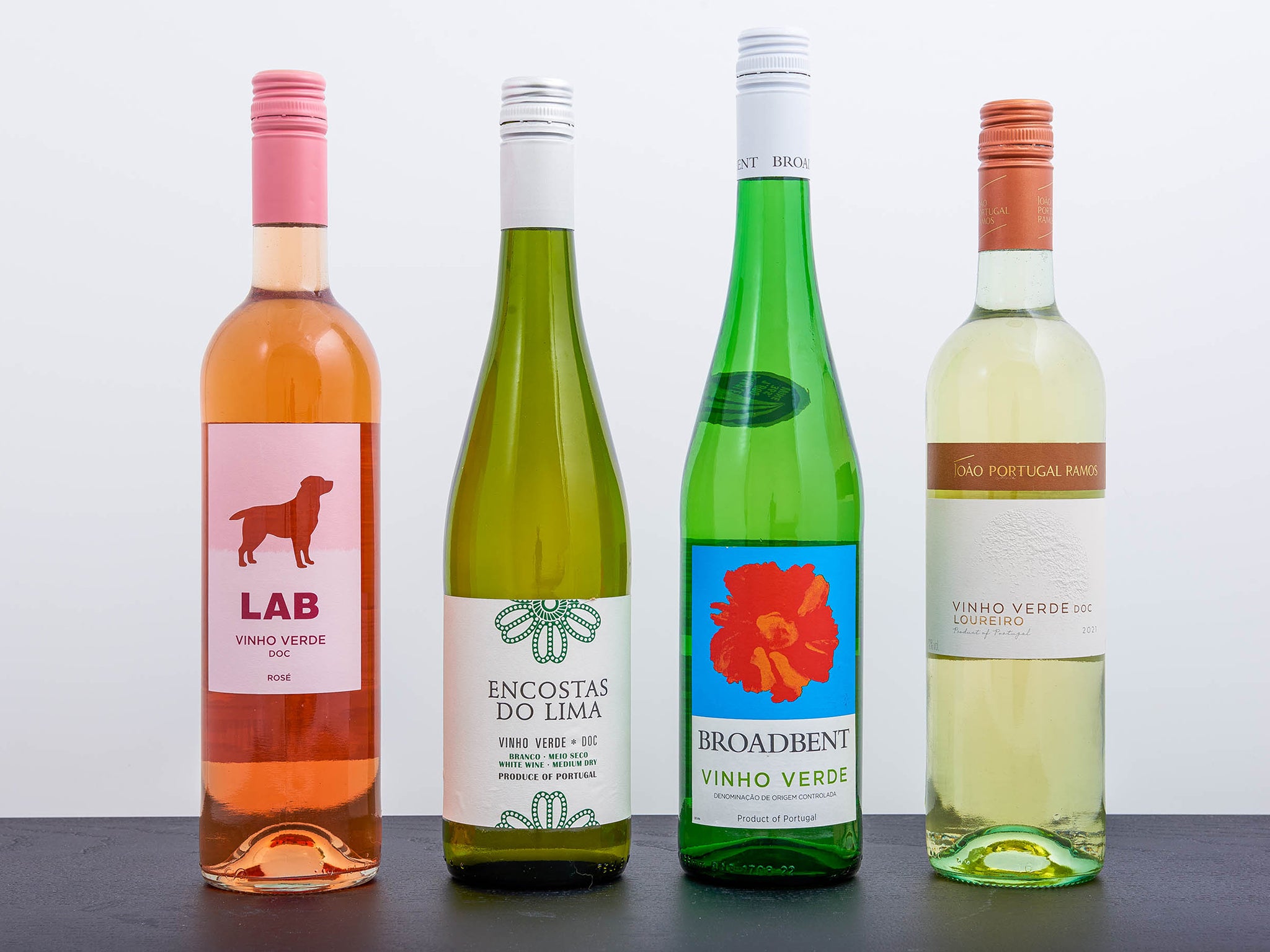What to know about vinho verde, Portugal’s effervescent bargain wine
When the sun is shining, vinho verde, from Portugal’s largest wine region, comes out to play. Dave McIntyre shares five things to know about this popular summer sip

Your support helps us to tell the story
From reproductive rights to climate change to Big Tech, The Independent is on the ground when the story is developing. Whether it's investigating the financials of Elon Musk's pro-Trump PAC or producing our latest documentary, 'The A Word', which shines a light on the American women fighting for reproductive rights, we know how important it is to parse out the facts from the messaging.
At such a critical moment in US history, we need reporters on the ground. Your donation allows us to keep sending journalists to speak to both sides of the story.
The Independent is trusted by Americans across the entire political spectrum. And unlike many other quality news outlets, we choose not to lock Americans out of our reporting and analysis with paywalls. We believe quality journalism should be available to everyone, paid for by those who can afford it.
Your support makes all the difference.To beat summer heat, wine lovers often turn to vinho verde, a light, refreshing wine from northern Portugal that has enjoyed a boomlet the past few years. One sign of its popularity – several local wineries are producing their own “verde-style” wines with the hallmarks of sharp acidity and slight carbonation.
But what exactly is this “green wine”? Here are five things to know about this popular summer sip.
1. The name
There’s no agreed on explanation for the name, which apparently evolved around the 17th century when the wines were first exported to Britain. It could be a reference to the “green” underripe flavours of tart apples and lime blossom in the very fresh, raw wine. It could also refer to the lush green landscape of the Minho region in northwestern Portugal, where the Atlantic Ocean’s maritime influence produces a climate and terroir starkly different from the parched Mediterranean lands in the Algarve to the south.
The Portuguese pronunciation is VEEN-yo VER-da, with the last syllable all but swallowed. If, like most people, you pronounce it VEE-no VERD-ee, the Portuguese winemakers will not complain. They will smile politely, pocket your cash and be happy you are enjoying their wine.
Green wine comes in white, pink and red (sorry, I couldn’t resist). Very little red is produced. Both the whites and rosés are notable for tart acidity (those green flavours) and a slight spritz of carbonation, which combine to make them refreshing, especially in hot weather. They are intended to be enjoyed, not aged. In fact, many are not even vintage-dated because they’re not expected to last long enough for the year to be relevant. So drink up!
2. The region and the grapes
Vinho verde is Portugal’s largest demarcated wine region, or appellation (though the administrative region is called Minho). There are nine subzones which generally do not appear on wine labels but may become increasingly important as winemakers explore different expressions of vinho verde. The main grapes are alvarinho (familiar to us as albariño) and loureiro, a crisp white often compared to riesling. There are several other varieties that are even harder to pronounce and noteworthy only if you are keeping track of varieties you’ve tasted. Alvarinho dominates the blends in the north (where the Minho borders Spain’s Rias Baixas region), and loureiro is more prominent further south.
3. That spritz
Vinho verde has been exported at least since the 17th century. Back in the day, the wine’s signature spritz resulted from a little bit of sugar remaining as the wines were rushed into bottle before fermentation had finished. Today, the bubbles are added artificially by carbonation before bottling. The level of carbonation is up to the producer – some vinho verde can be quite fizzy, while others gently tickle the palate.
4. You can use it in cocktails
Vinho verde’s fizz and still relatively low price make it an ideal foil for your summer mixology efforts. An ice cube, slice of lime and a splash of gin make a nice spritzer. It can also be a great base for sangria.
5. New styles are evolving
While we think of vinho verde as a simple, enjoyable starter wine for a summer repast, some winemakers are producing more serious versions. These are usually made from a single variety (such as alvarinho or loureiro) and labelled with the vintage. Some producers are bottling single-vineyard wines to highlight a site’s granite or schist soils.
“The wines are changing and moving forward with an international, incredibly bright and pure style,” says Eugénio Jardim, the brand ambassador for Wines of Portugal. He cited Anselmo Mendes and Quinta da Soalheiro as pioneers of this new style.
“This is a region in flux, with the quality of wines soaring in recent years,” Jardim tells me. “This is not a one-note region.”
© The Washington Post
Join our commenting forum
Join thought-provoking conversations, follow other Independent readers and see their replies
Comments